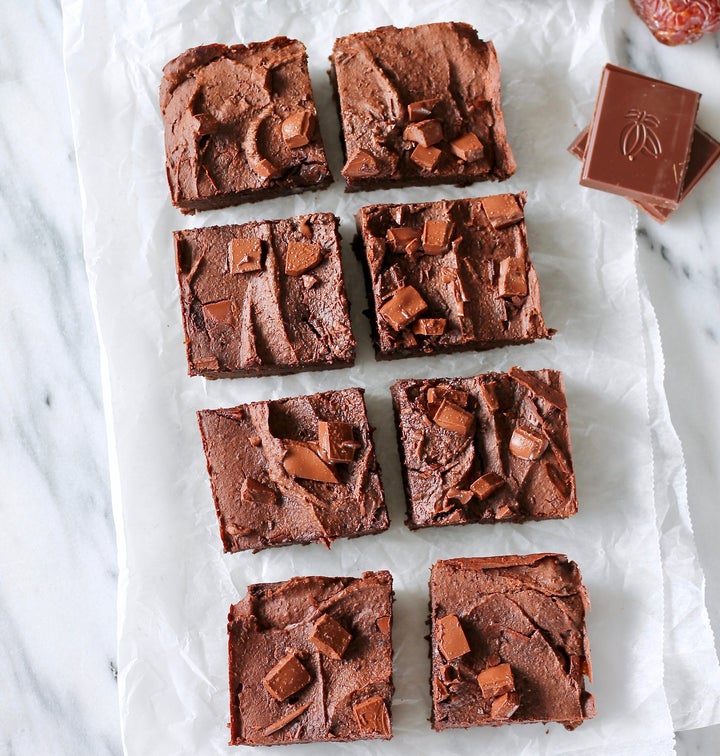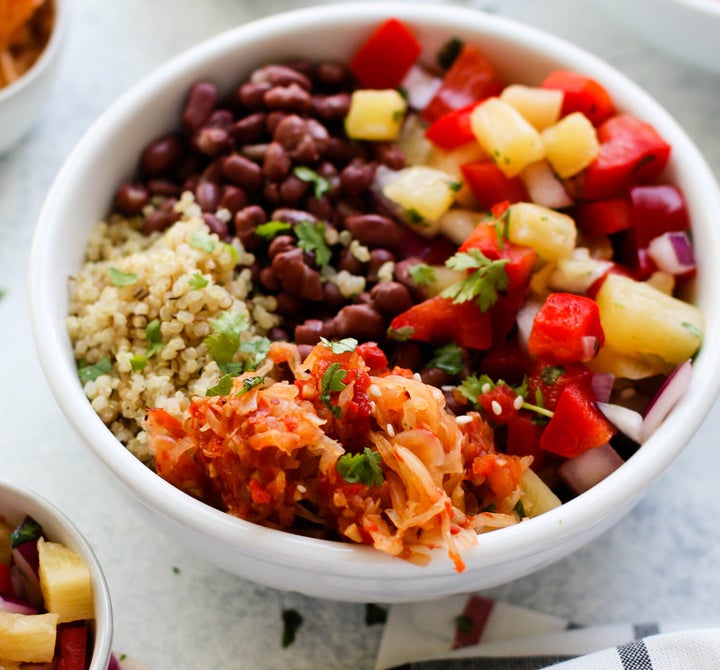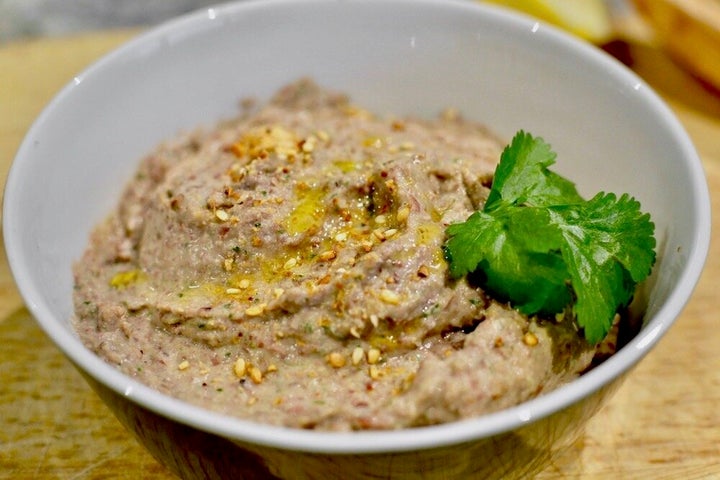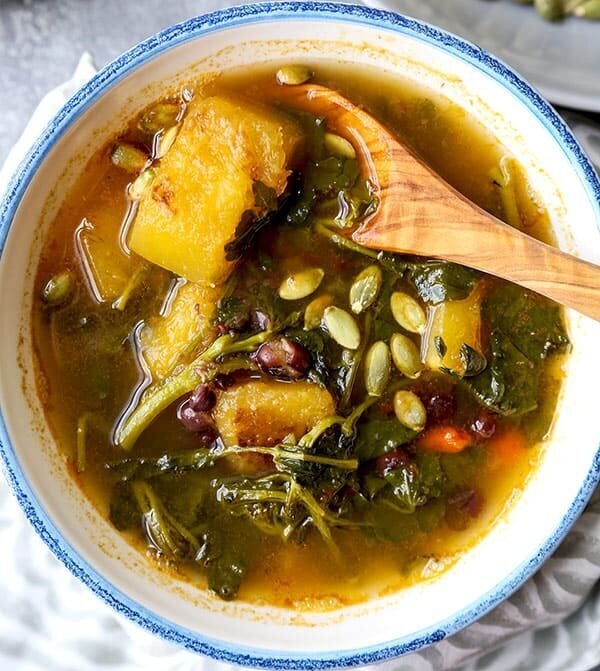When you’re shopping for a protein-packed legume to add to lunch or dinner, popular options tend to be garbanzo beans, black beans and cannellini beans. And they’re great! But it’s always fun to shake up your routine, and there’s one food you probably overlooked on your way to the checkout line: the adzuki bean.
While the bean is often made into a paste and used in East Asian desserts, we spoke to nutritionists about why you should be eating this mighty, nutritious item as a part of a healthy meal. Plus, there are nutritional benefits you can’t get from those other beans. We’re also providing five fantastic recipes from around the internet to show you how the bean can be consumed with soups, hummus, grain bowls and even brownies.
Adzuki beans are incredibly nutritious.
Digging into the bean’s nutritional content shows what sets it apart from other beans. “This bean is a superstar,” nutritionist Jenna Appel told HuffPost. “It’s got a lot of really amazing vitamins and minerals, and is really on point with its amount of micronutrients.”
She noted that it’s low in fat, naturally gluten-free and includes 7.5 grams of protein and 7.3 grams of fiber in a 3.5-ounce serving size. For reference, black beans have slightly more protein (8.8 ounces) and fiber (8.6 ounces) in the same size serving.
But we’re aiming to highlight the benefits of this bean from many different angles. “It’s a high-protein plant food,” Appel said. “Similar to other beans, it’s a complex carbohydrate; it has components of carbs and proteins.”
You’re likely not consuming enough beans in general. “According to MyPlate [the U.S. Agriculture Department’s Nutrition Guide], Americans should be eating 1.5 cups of beans per week,” nutritionist and cookbook author Ruth Frechman told HuffPost. “I think most people aren’t getting enough per week, and they’re an underrated food considering how many nutrients they have in them. We should be consuming more of them.”
And let’s be clear: you shouldn’t only eat adzuki beans. Appel stressed that it’s a good idea to eat a mix of different protein. “A variety is going to give you good amounts of nutritional value from the vitamins, minerals and nutritional components that make it up,” she said. “The key thing is choosing a variety of plant-based protein.”
Fiber is an underrated component of the bean.
The adzuki’s fiber content is particularly robust, especially when compared to white beans, kidney beans, baked beans and soybeans. “Most Americans are low on fiber, and [adzuki] have plenty,” Frechman said. “The great thing about beans [in general] is that they’re a soluble fiber, specifically a viscous fiber. This fiber forms a gel in water that makes it act like a sponge to soak up the cholesterol to counteract saturated fat.”
Fiber is also a potential helping hand when it comes to shedding pounds. “If you have a weight loss goal, the fiber content is what helps you feeling full, satisfied and satiated with your meal,” Appel said. “If you have a good fiber intake, that helps keep you full between mealtimes, which prevents overeating between meals or going for unnecessary snacks.”
Adzuki beans contain plenty of micronutrients.
Although adzuki beans have similar protein and fiber content to black beans and chickpeas, they feature micronutrients in more robust amounts than you might find in those other, more familiar beans.
“There’s a powerhouse in that little bean,” Frechman said. “You’re protecting yourself against heart disease and cancer when you’re eating them.”
That’s because adzuki beans contain folates, which studies show can help reduce the risk of chronic diseases. “Folates are a super important B-vitamin for normal cell function, cell growth and metabolism,” Appel said. “Adzuki beans are on point with its folate content; some other beans have good folate content as well, but this one is rock solid.”
And it’s much more than just high in folates. “It also has high levels of manganese,” Appel explained, as one cup of black beans contain half the amount of manganese in adzuki beans. “It’s a trace mineral, so your body needs it in smaller amounts, but it’s required for normal functioning of your brain and nervous system. There’s also other nutrients, like phosphorous, potassium, copper, magnesium, zinc and iron ― it’s got it all!” (Surprise, black beans and chickpeas have less phosphorous, magnesium and potassium than the mighty adzuki.)
Its affordability is unmatched.
Some protein sources can be expensive. Adzuki beans are not one of those sources. “Beans are a very economical source of protein,” Frechman said. Whether you purchase them in bulk and cook them yourself or buy them for a few dollars per can, adzuki beans are budget-friendly. “If you buy a can, you get 2-3 servings out of that,” Appel noted. “It’s more servings for a cheaper price.”
Here’s how to prepare adzuki beans.
Because adzuki beans aren’t frequently seen on restaurant menus and recipe blogs like garbanzo or black beans, you may be wondering how to consume them.
“This bean actually has a sweet taste to it,” Appel said, which is why you’ll want to use them in the following dessert recipes. But it’s also versatile, and can be used as a key protein source in a delicious, tropical flavor-filled grain bowl.
You can find cooked adzuki beans in a can (Eden Organic is a solid choice) in most supermarkets alongside other canned beans like garbanzos and pintos, although should you want to purchase them dry and prepare them on your own, you may have to find a nearby Asian market or specialty store. Or you can always buy them in bulk online.
Here are some delicious recipes that include the adzuki bean (click on the links).

Recipe author Hey Nutrition Lady developed a brownie recipe that only takes 10 minutes of prep time.

If you’ve never tried dessert soup, take the advice of the Instant Pot experts Amy + Jacky and whip up this comforting, sweet dish.

Flora & Vino develops a ton of power bowls for her blog, and this flavor-packed option pairs adzuki beans with coconut quinoa, sweet pineapple salsa and spicy kimchi.

Garbanzos aren’t the only bean you can turn into hummus, as Vegan on Board proves with this take on the Mediterranean staple that blends adzukis with tahini, cumin, coriander and lemon juice.

Cozy up to a bowl of this fiery, chile paste-accented soup from Pickled Plum when the temperatures dip this winter.
